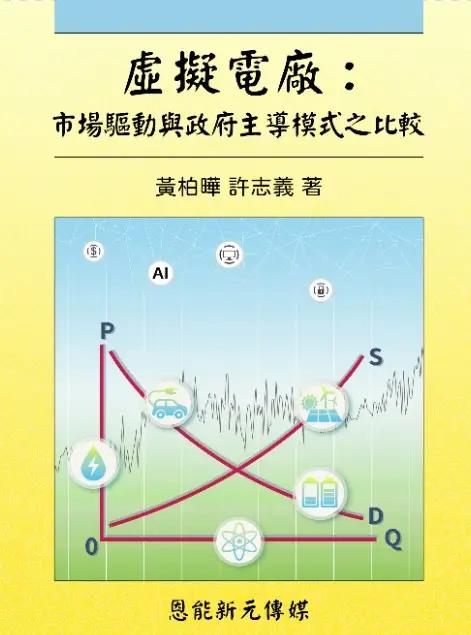TAEDT|Series 001-Virtual Power Plants: Comparison of Market-Driven and Government-Led Mechanisms

VPP
TAEDT|Series 001-Virtual Power Plants: Comparison of Market-Driven and Government-Led Mechanisms
-
Publication Date2025 / 08
-
LanguageTraditional Chinese and English
-
Pages139
-
Supported Devices
E-book
Detailed Introduction
Table of Contents
Preface ........................................................................ 1
Author’s Preface ......................................................13
Summary ....................................................................14
Abstract .......................................................................16
Chapter 1. Virtual Power Plants as the Foundation of the Modern Grid .......... 19
1.1 Defining the VPP: From Aggregated Distributed Energy to Controllable Grid Assets .............................................................. 19
1.2 The Value Proposition of VPPs: Enhancing Flexibility, Stability, and Market Efficiency .......................................................... 20
Chapter 2. Comparative Analysis of VPP Operating Environments ................. 22
2.1 Market Structures and Business Roles: Independent Participants vs. Utility Contractors ......................................................... 24
2.2 Market Efficiency and Price Elasticity: The Power of Volatility .............. 25
2.3 Renewable Energy Integration: Active vs. Passive Approaches .................. 27
2.4 Participant Profiles: Diverse Ecosystems vs. Regulated Clubs .................... 27
2.5 Policy and Regulatory Frameworks: Enabling Competition vs. Controlled Procurement ....................................................... 28
Chapter 3. In-Depth Analysis of VPP Operations: Case Studies ...................... 30
3.1 Germany's "Energiewende" and Its Mature VPP Ecosystem ...................... 30
3.2 Market-Driven Innovation in the U.S.: The California ISO Experience ...... 31
3.3 Japan's Phased Liberalization and Strategic VPP Development ................ 33
3.4 Taiwan's Emerging Market: The Taipower Platform and Its Limitations .... 34
Chapter 4. Comprehensive Analysis of Strengths and Weaknesses ................. 37
4.1 Advantages of the Market-Oriented Model ................................................ 37
4.2 Disadvantages of the Market-Oriented Model ........................................... 38
4.3 Advantages of the Government-Led Model (Taiwan) ................................. 38
4.4 Disadvantages of the Government-Led Model (Taiwan) ............................ 39
Chapter 5. Strategic Outlook and Recommendations for Taiwan .................... 41
5.1 Building on Taiwan's Unique Industrial Strengths ..................................... 41
5.2 Key Insights from International VPP Market Designs ................................. 41
5.3 A Roadmap for Unlocking Taiwan';s VPP Potential .................................... 42
5.4 Overcoming Barriers: Addressing Regulatory, Technical, and Market Challenges .................................................... 45
Chapter 6. Conclusion .............................................................. 47
References .................................................................... 49
Epilogue: Looking Ahead at the Crossroads of Taiwan's Energy Transition ...... 62
Others also viewed...
Offshore Engineering|Chapter 1-Project Start
 Offshore Engineering|Chapter 1-Project Start
Offshore Engineering|Chapter 1-Project Start
EnergyOMNI|No.002-The Path to Sustainable Energy Management
 EnergyOMNI|No.002-The Path to Sustainable Energy Management
EnergyOMNI|No.002-The Path to Sustainable Energy Management
Offshore Engineering|Chapter 5-Wind Turbine Integration
 Offshore Engineering|Chapter 5-Wind Turbine Integration
Offshore Engineering|Chapter 5-Wind Turbine Integration
EnergyOMNI|No.006-Resilience and De-Carbonization of Virtual Power Plants and Distributed Energy Sustainable Development Goals for the Renewable Energy Market in Taiwan
 EnergyOMNI|No.006-Resilience and De-Carbonization of Virtual Power Plants and Distributed Energy Sustainable Development Goals for the Renewable Energy Market in Taiwan
EnergyOMNI|No.006-Resilience and De-Carbonization of Virtual Power Plants and Distributed Energy Sustainable Development Goals for the Renewable Energy Market in Taiwan
